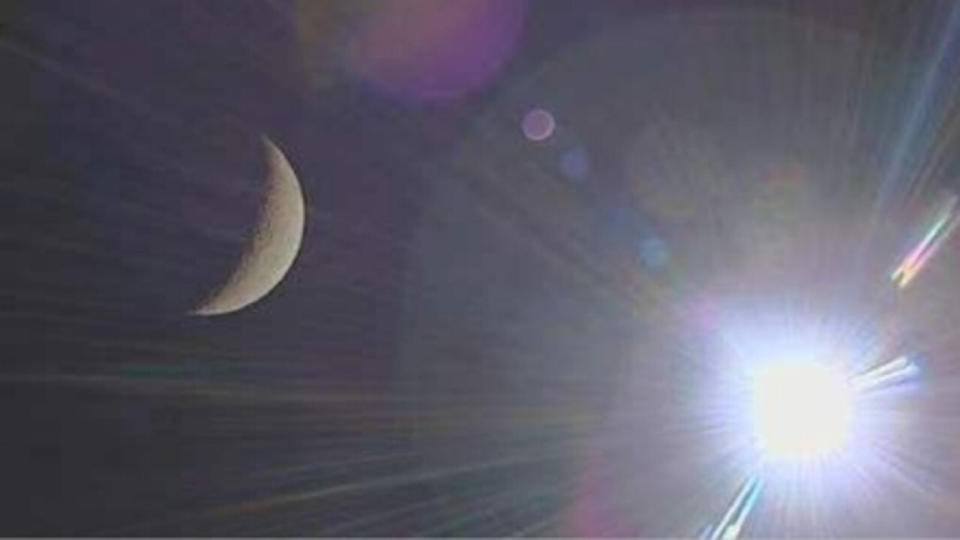Pakistani cubesat snaps images of the moon during China's lunar far side mission (photos)

A small Pakistani satellite has imaged the sun and moon from lunar orbit, having taken a ride with China's Chang'e-6 mission to sample the far side of the moon.
China launched Chang'e-6 on May 3, aiming to grab samples from Apollo crater on the lunar far side and deliver them to Earth for analysis. The China-Pakistan ICUBE-Q was released by the spacecraft May 8.
The small, 15.4-pound (7 kilograms) satellite then captured images of the moon and sun and collected magnetic field data. A tertiary goal of imaging the Chang'e-6 spacecraft was not apparently successful based on the publicly released data.
Related: China picks 4 international payloads for historic sample-return mission to moon's far side
A data handover ceremony was held on May 10 in Beijing. Data included the first photographs taken by the satellite, showing the Sun and the moon. Zhang Kejian, head of the China National Space Administration (CNSA), presented the data to the Pakistani Ambassador to China, Khalil-ur-Rahman Hashmi, symbolizing the collaborative efforts in space technology and exploration between China and Pakistan.
"This is a very enormous, momentous event for us, because this is the first ever lunar mission to the moon for Pakistan. And with the help of Chinese friends, that is a great day for us," Gilani said, according to a CCTV+ report.
"We are looking towards [cooperation] of all domains of technology here, be it remote sensing, be it navigation and be it communication satellites. Subsequently, we have a number of launches from China, and that shows the good cooperation going on."

Related Stories:
China recruits Pakistan and Belarus for its planned moon base
— China unveils video of its moon base plans, which weirdly includes a NASA space shuttle
— Are we prepared for Chinese preeminence on the moon and Mars? (op-ed)
Pakistan's Institute of Space Technology and China's Shanghai Jiao Tong University jointly developed the satellite. The spacecraft is a furthering of cooperation between the two, with Pakistan also signing up to China's International Lunar Research Station (ILRS).
Ge Ping, deputy director of CNSA's Lunar Exploration and Space Engineering Center, said China has also received an application from Pakistan to contribute payloads on the future Chang'e-8 mission.
Meanwhile, Chang'e-6 is in lunar orbit and gearing up for its landing attempt. CNSA has not provided a date for the landing, but it is expected around early June.

